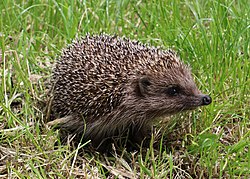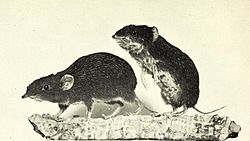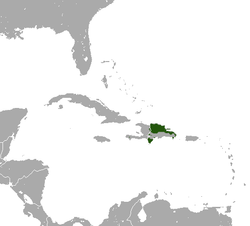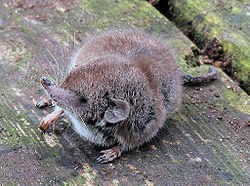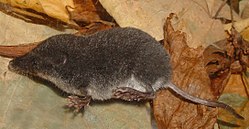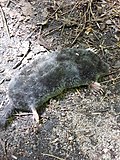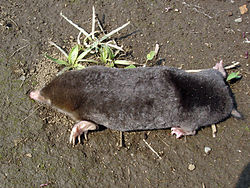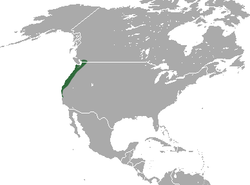
Eulipotyphla is an order of placental mammals which includes hedgehogs, gymnures, moles, shrew moles, desmans, solenodons, and shrews. Members of this order are called eulipotyphlans. The order currently comprises 485 extant species, which are grouped into 53 genera. Eulipotyphlans live worldwide, with the exceptions of Australia and most of South America, and in a variety of habitats, particularly forests, shrublands, and grasslands, but also including savannas, wetlands, deserts, and rocky areas. They come in a variety of body plans in contrasting shapes and sizes, and range in size from the Etruscan shrew, at 3 cm (1 in) plus a 3 cm (1 in) tail to the moonrat, at 46 cm (18 in) plus a 30 cm (12 in) tail.
Contents
- Conventions
- Classification
- Eulipotyphlans
- Family Erinaceidae
- Family Solenodontidae
- Family Soricidae
- Family Talpidae
- References
- Sources
Eulipotyphla is divided into four families: Erinaceidae, containing the hedgehogs and gymnures; Solenodontidae, containing the solenodons; Soricidae, containing the shrews; and Talpidae, containing the moles, shrew moles, and desmans. Erinaceidae has twenty-four species split between the subfamilies Erinaceinae (hedgehogs) and Galericinae (gymnures). Solenodontidae has only two species. Soricidae has 418 species split between the subfamilies Crocidurinae (white-toothed shrews), Myosoricinae (African shrews), and Soricinae (red-toothed shrews). Talpidae has 45 species split between the subfamilies Scalopinae (moles), Talpinae (moles, shrew moles, and desmans), and Uropsilinae (shrew moles). The exact classification of the species is not fixed, with many recent proposals made based on molecular phylogenetic analysis. One species was declared extinct in 2025, the Christmas Island shrew, the only one to have gone extinct since 1500 CE, and over 50 species, or more than 10 percent of all eulipotyphlans, are considered endangered or critically endangered.

